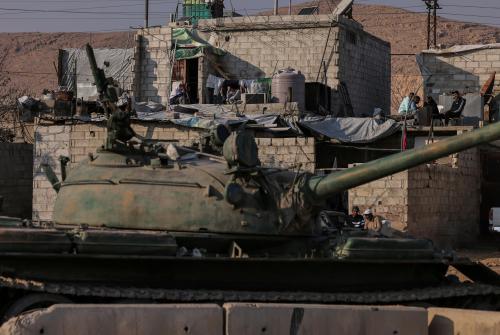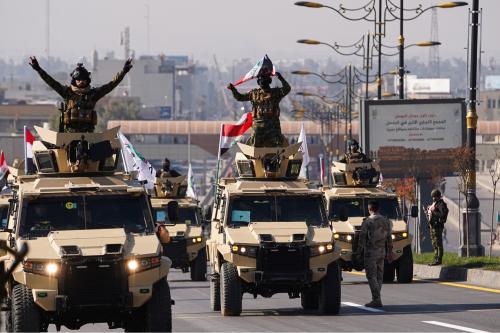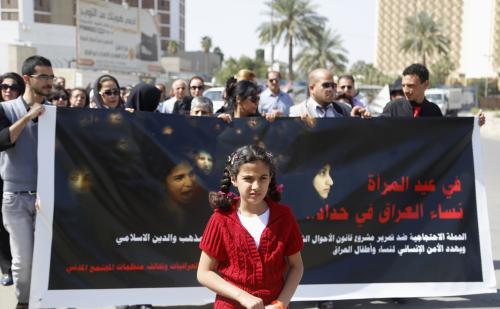Buoyed by the military success in Afghanistan, a growing chorus of Americans is now advocating that we make Saddam Hussein our next target. Some believe Saddam may have had a hand in Sept. 11; others doubt that claim, but nonetheless think we now have an opportunity to rid the world of a scourge who has already been tolerated too long. Most argue that something like the Afghanistan model?training and equipping the Iraqi resistance, while using American air power and special forces to support that resistance?could get the job done.
Much of this thinking is overly optimistic. Some of it is simply irresponsible. There is no doubt that Saddam is a monster who has committed heinous crimes against many peoples in the region, and that he is in violation of U.N. Security Council resolutions that require him to dismantle his weapons of mass destruction. But that does not mean he will be easy to overthrow.
The Afghanistan model of warfare may not apply very well to Iraq. Taliban forces never numbered more than 40,000 and they faced a battle-hardened opposition. After initial resistance, many surrendered or retreated once other Afghan militias organized against them and once the willingness of the United States to escalate became clear.
By contrast, Iraqi armed forces are quite large, and the splintered internal opposition is weak?even in aggregate. There are 400,000 active-duty troops in the Iraqi military; more to the point, there are some 100,000 in Saddam’s more reliable Republican Guard and Special Republican Guard. These privileged forces could be expected to fight hard against any internal revolt, and in fact would probably fight hard against the United States?just as they did a decade ago during Desert Storm.
For these reasons, the Iraqi opposition could not be expected to win on its own, or even with the help of just U.S. air power. American ground forces would be needed. They might not have to be as numerous as the half-million deployed to Desert Storm, but would almost surely have to total at least 100,000 to 200,000.
In the forest and urban terrain of central Iraq, combat could resemble the 1993 U.S. experience in Mogadishu more than operations Desert Storm or Enduring Freedom. Iraqis may not be as tough fighters as Somalis, but they are much better armed, and probably even better at placing their weaponry near schools, hospitals, mosques and apartment buildings. Using modern technology, we could probably find and strike some of that weaponry. But the Afghanistan experience, in which U.S. special forces could approach Taliban trench lines and then call in airstrikes against the exposed targets, would be hard to replicate. U.S. forces would still win most firefights. But historical precedents from Panama to Somalia to the Arab-Israeli wars suggest that, given the number of elite Iraqi forces, the United States could lose thousands of troops in the process.
Once we announced our goal as regime change, moreover, Saddam would have little reason not to use chemical or biological agents against invading U.S. forces. We would still win, but casualties would increase as a result. With his back against the wall, Saddam might also use his missiles and weapons of mass destruction against civilian targets in places such as Israel, Kuwait, Turkey and Saudi Arabia. As we deployed forces into the region, he could also try to sneak Iraqi agents armed with biological materials onto American or European territory. Even if some were caught, he could still credibly threaten reprisal in the event we actually began the invasion.
Even after the victory was won, the effort would not be over. Large numbers of occupation forces, many of them surely American, would probably be needed for years?unless the United States were willing to run the risk that Iraq would descend into a protracted state of civil war. Iraq is eight times larger and six times more populous than Bosnia, where 40,000 to 50,000 NATO troops were initially needed to keep the peace and where 20,000 remain today. Scaling these numbers implies an occupation force beginning at some 250,000 troops and remaining more than 100,000 strong even after half a decade.
We do not mean to exaggerate the costs of overthrowing Saddam or deny the likely benefits. U.S. casualties could number in the thousands, but might wind up less?and would surely not approach levels of the Vietnam and Korean wars. Nor would we run the serious risk of a long campaign or military stalemate, as we did in those other conflicts. Even if most other countries objected to our decision to target Saddam, few could complain once he was gone?and our reputation in the Arab world might improve once sanctions on the Iraqi people were lifted.
But what cannot be tolerated is a casual march to war in which we assume that Saddam will quickly fall, fail to prepare a backup plan in case he does not, and assume away the need to remain in Iraq once victory was achieved. That is a prescription for doing little more than getting opposition forces slaughtered while weakening the credibility of our global leadership and seriously harming the broader campaign against terrorism.
The Brookings Institution is committed to quality, independence, and impact.
We are supported by a diverse array of funders. In line with our values and policies, each Brookings publication represents the sole views of its author(s).



Commentary
Op-edA Tougher Target: The Afghanistan Model of Warfare May Not Apply Very Well to Iraq
December 26, 2001